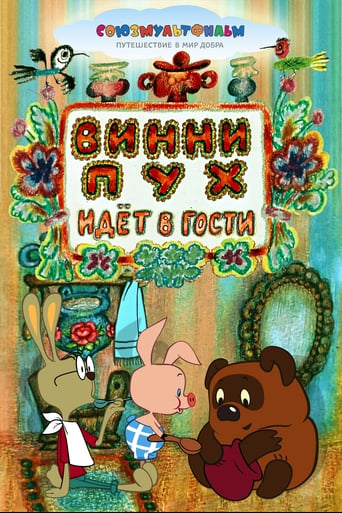Horst in Translation ([email protected])
This is the second of the three Soviet Winnie Pooh films by Fyodor Khitruk, in his 50s at this point, from the late 1960s, early 1970s and it's as much fun as the first. Running time's pretty much the same, minutes are barely in double digit territory. Piglet is back too and joins Winnie on a trip to their rabbit friend. He's the "lucky" one referred to in the English title "Winnie the Pooh Goes Visiting". And as with the honeybees in the first, Winnie's huge hunger gets him in big trouble once again. After playing with piglet, he gets hungry and they go to rabbit. Winnie's singing again as always in the Soviet pooh films and I quite enjoyed his "taram-param param-taram". Having finally arrived at the rabbit hole, Winnie can't wait to get a nice meal served by the host and once it's there, he's the one eating as if he's the pig out of the two. But he's gonna pay the price for that.Animation's just like in the first one. Rather minimalist and the landscapes look like children's painting. It works though. It's a very innocent style of narration and animation. Suitable for kids and when the next Disney Pooh film hits theaters, people should show their small ones also the original Russian cartoons. They're not worse at all and not half as known as they should be. Just different. Pooh has darker fur again and Rabbit wears glasses and a red shirt. Recommended.




